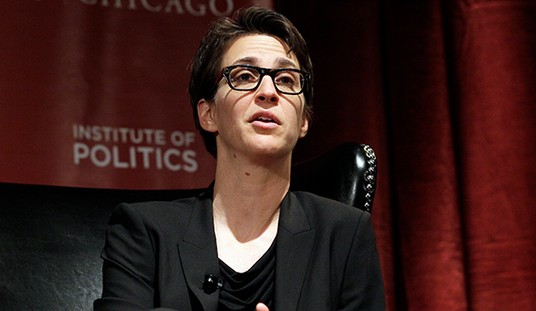Have a laugh at the headline but there’s a fair critique hidden in his shpiel about that bombshell 67 percent figure that was dropped by the House Energy and Commerce Committee yesterday. I already gave you one potential flaw in the Committee’s analysis in my post on that — namely, it may be that populous states like California and New York, which operate their own independent state exchanges, are seeing higher rates of payment among enrollees. That data wasn’t included in the Committee’s analysis because they looked only at the federal exchange. If a big state like California, say, is seeing an 85 percent payment rate, that’s going to drag the total national payment rate up from 67 percent. And in fact, according to a report in March, that’s exactly what California’s seeing — 85 percent. That’s red flag number one.
Red flag number two is Carney’s point here about the surge in enrollment right before the deadline. Here’s Peter Suderman, making the same argument:
April 15 [the as-of date used by the Committee] is just too early to measure anything close to a final payment rate. A huge portion of Obamacare exchange sign ups came in the last few days of open enrollment, for coverage that doesn’t begin until the first day of May. More people signed up later in the month, in the law’s special open enrollment period, and in some cases their coverage won’t start until June. Since the first payments aren’t due until the first day coverage starts, or even as long as 10 days after, that means that lots of people who have signed up still have time to pay. The deadline hasn’t arrived yet. And one thing the end of March sign up spike revealed is that when it comes to health insurance under Obamacare, lots of people wait until the very last minute to take action.
In other words, the fact that 33 percent hadn’t paid as of April 15th doesn’t mean that most of them are deadbeats. What it could mean, given the huge spike in sign-ups in late March, is that a bunch of them simply hadn’t received their first bill yet or were waiting to pay their first bill during the second half of April. They’re not late in paying, they simply haven’t cut the check yet. That may explain the discrepancy between the shocking 67 percent payment rate detected by the Committee and the 80 percent payment rate that insurers have been whispering about for months. Maybe the 13 percent difference is just people who signed up on March 31st and were planning to pay on, say, April 20th. They wouldn’t show up in the Committee data, which ended on April 15th, but they’re valid enrollees nonetheless. For what it’s worth, WellPoint, a major insurer, says the payment rate among its customers is in the ballpark of 90 percent. Hmmmm.
If this is what’s happening, why would the Committee float a bombshell number that may very well turn out to be wrong? Could be it’s just their way of planting an extra seed of doubt in the public’s mind about O-Care: Even if the 67 percent figure is incorrect, it’ll stick in some voters’ minds. Seems awfully stupid, though, to give the White House a chance to say “I told you so” if the final payment rate ends up being much higher. By lowering public expectations to 67 percent, now the White House can spin an 80 percent rate as a “success” rather than the PR black eye that it is. (Twenty percent nonpayment would mean more than a million people would be tossed from the rolls.) I hope this doesn’t blow up in the Committee’s face.








Join the conversation as a VIP Member